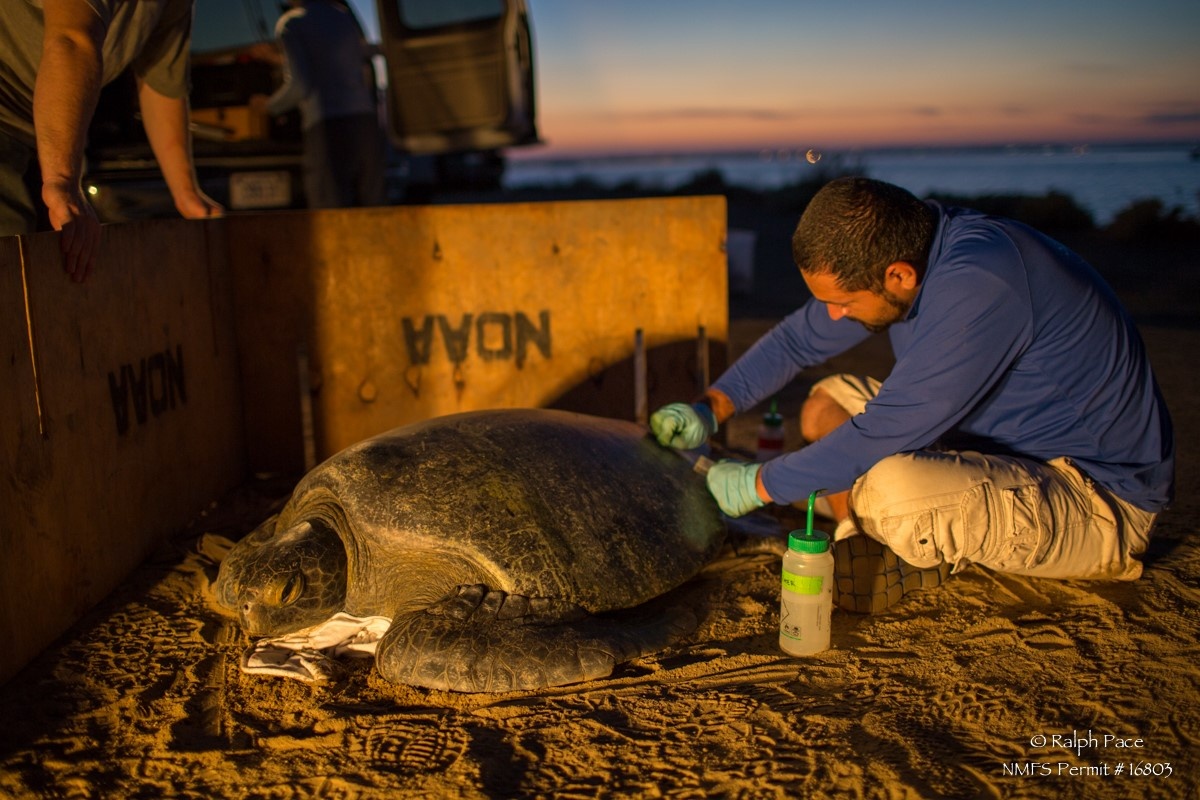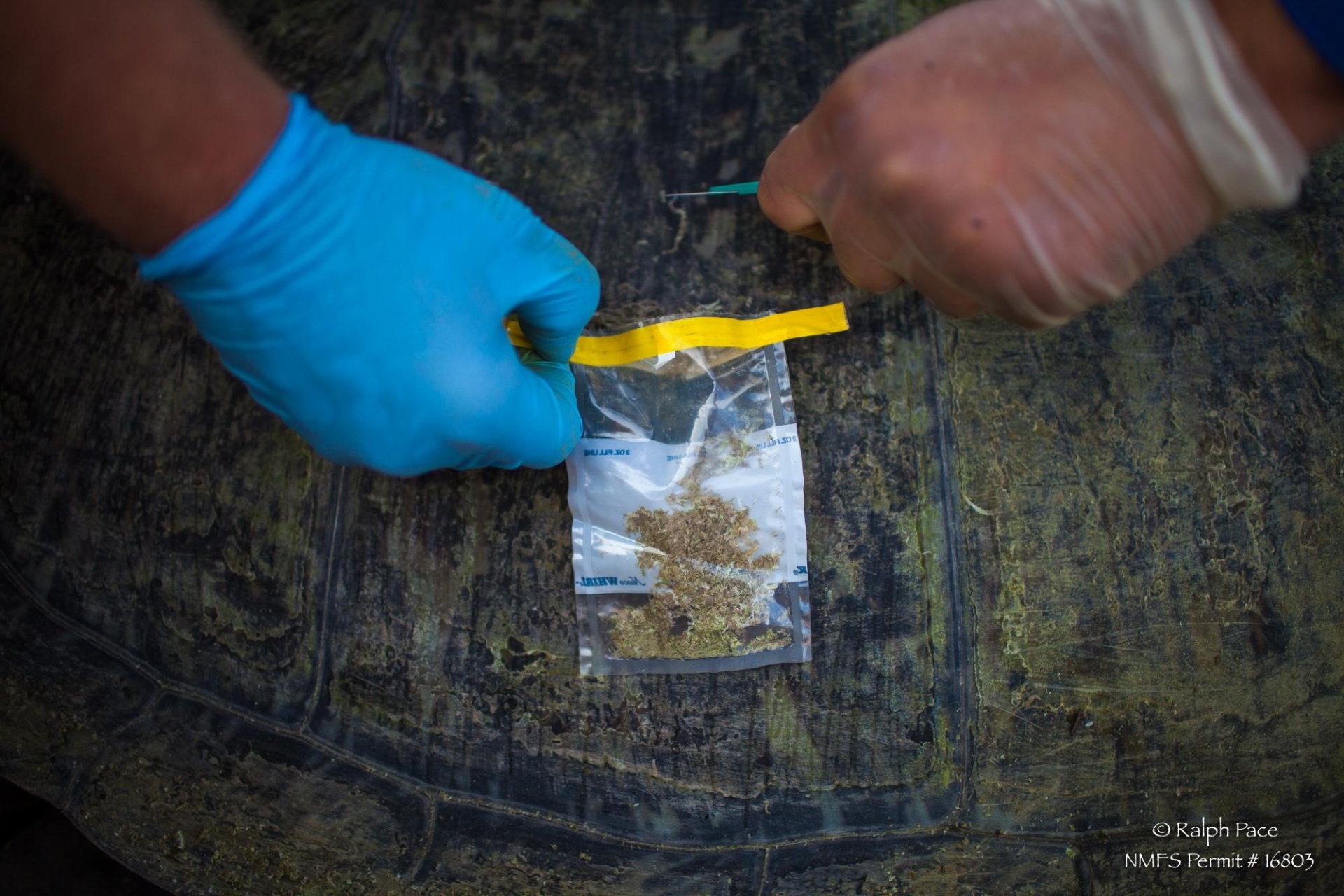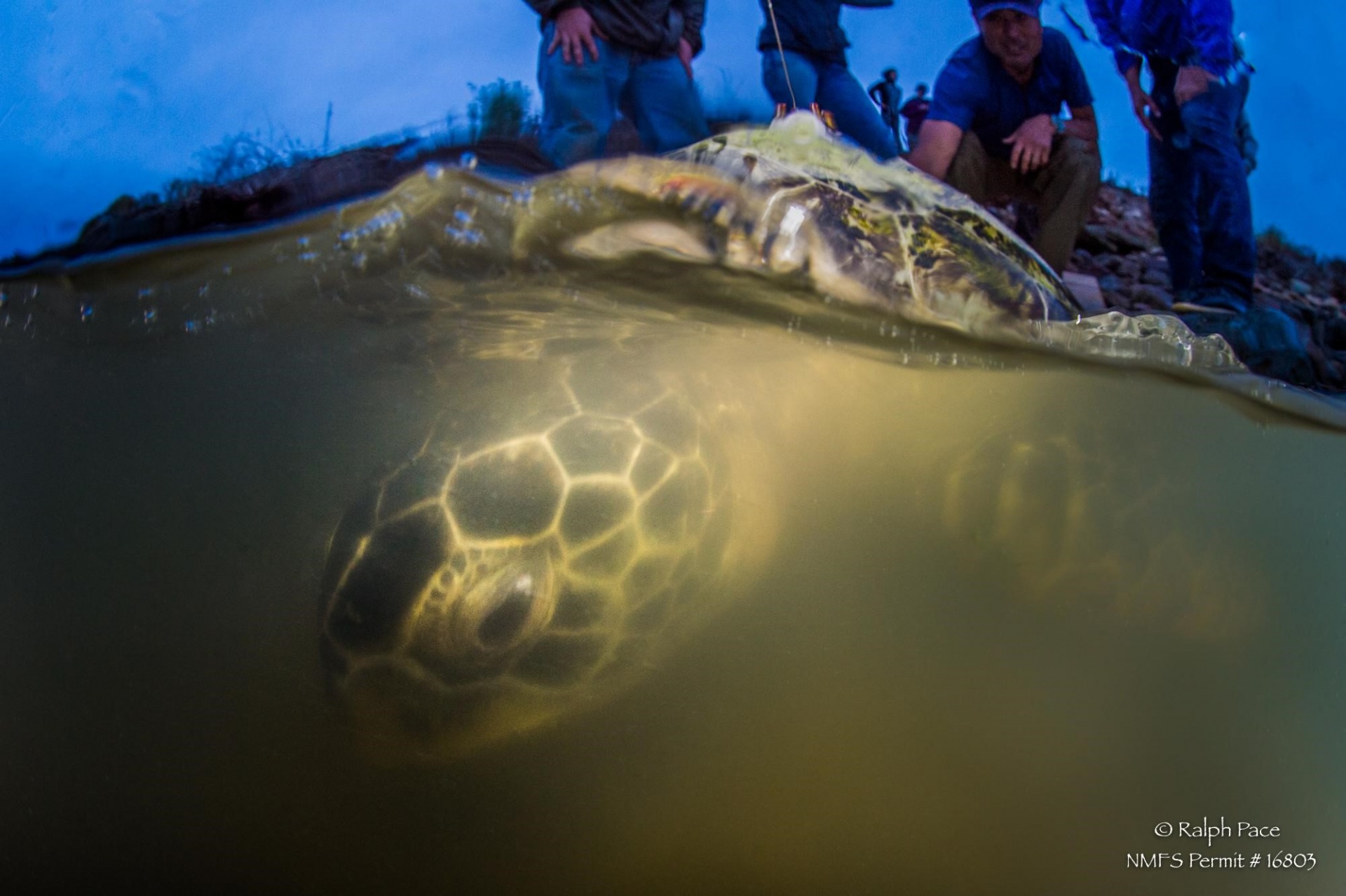Contaminants in Urban Green Sea Turtles

The green sea turtle (Chelonia mydas) is a threatened species of sea turtle that is long-lived and omnivorous. When green sea turtles hatch from their eggs, they roam the open ocean for many years until they reach sub-adulthood (around 5 - 15 years old). Once green turtles reach sub-adulthood, they commonly inhabit coastal areas to forage for long periods of time. Green turtles only leave these foraging grounds for breeding, with male turtles leaving for breeding every year and female turtles leaving for breeding every 2 to 3 years. Overall, this means that green turtles spend most of their life at their coastal foraging grounds. Due to the power plants located along these foraging grounds and increasing ocean temperatures due to climate change, green turtles are now living in Southern California waters year-round.
Two green turtle coastal foraging grounds in Southern California are in Long Beach and San Diego. Both cities are located close to two of the largest metropolitan areas in California, receive runoff from the surrounding urban areas, and are home to some of the largest ports in the West Coast of the United States. As a result, the waters around the Long Beach and San Diego area are polluted with contaminants from human activities.

Two of the most common types of contaminants found are persistent organic pollutants (POPs) and trace metals. Trace metals are metals that are normally found in the environment at low levels but have increased concentrations in the environment through human activities such as the dust from car brakes, industrial processes, and urban runoff. Persistent organic pollutants are man-made chemicals designed to last for long periods of time. These include chemicals such as PCBs, DDTs, and PBDEs, which were used as flame-retardants and pesticides. These contaminants are known to cause negative health effects in wildlife, including neurotoxicity, immunosuppression, and sudden death. Examining these contaminants in green sea turtles, a species listed as threatened under the Endangered Species Act, is important to understanding how green turtles could be affected by urban pollution.

To examine this problem, Barraza et al. (in review) conducted a study on the two groups of green turtles, specifically those inhabiting the Seal Beach National Wildlife Refuge and South San Diego Bay and examined their trace metal and POP levels. Green turtles were captured in each area and had blood and scute samples taken before being released back into the wild. Barraza et al. (in review) found that green turtles had different contaminants based on where they lived. Green turtles inhabiting the Seal Beach National Wildlife Refuge had higher selenium and cadmium concentrations in blood than green turtles from San Diego Bay. While green turtles from San Diego Bay had higher PCBs concentrations in blood than green turtles from the Seal Beach National Wildlife Refuge. These findings indicate that each aggregation of green turtles faces different potential risks based on the urban areas they inhabit. As global ocean temperatures increase, and green turtle populations continue to recover, habitats like the Southern California area will likely have more green turtles living there year-round. As a result, it will become more important to study the effects of these contaminants on green sea turtle health and reproduction.





